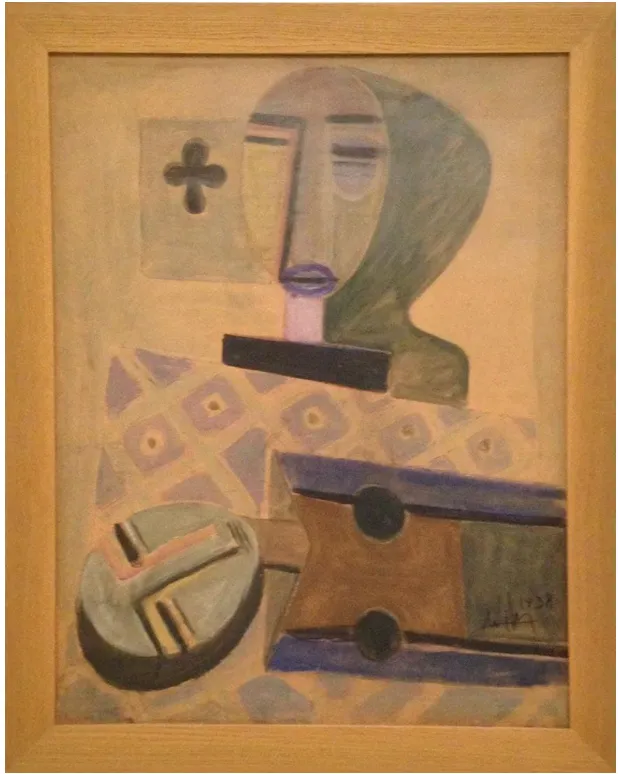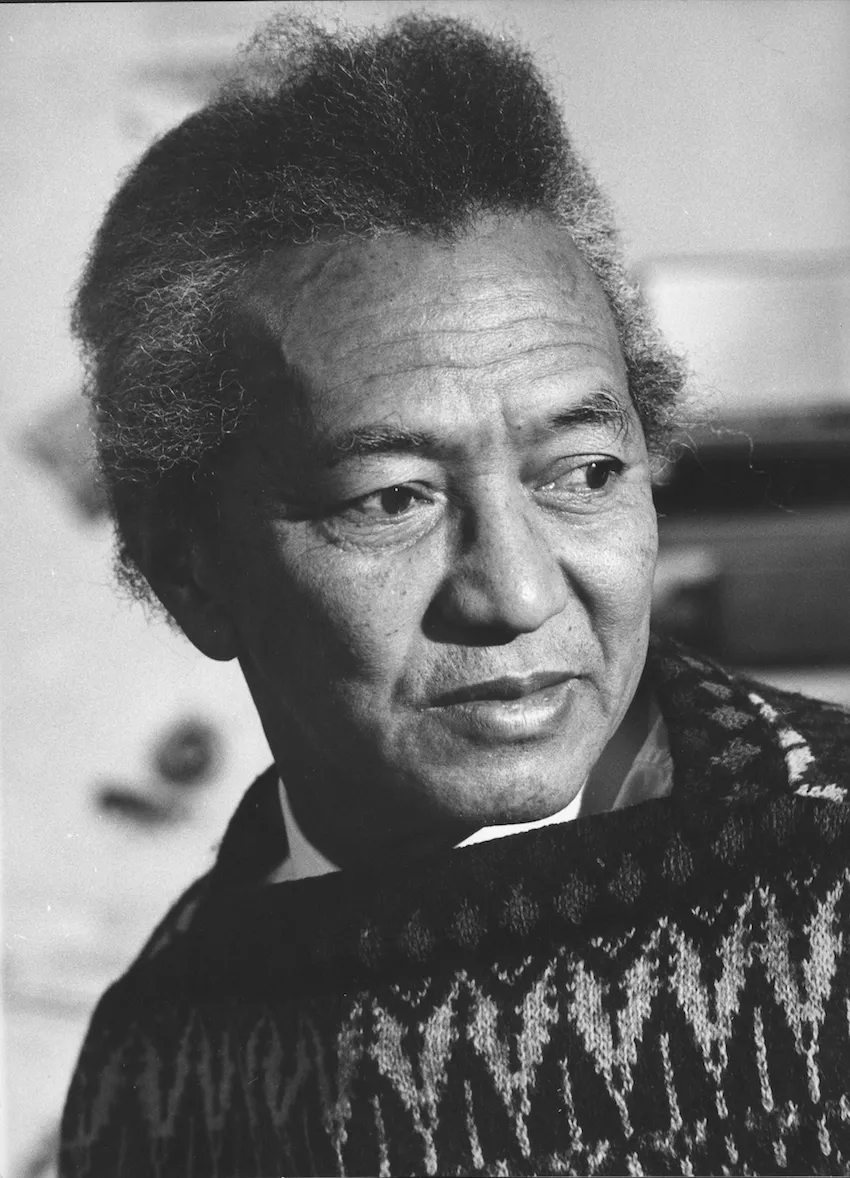
This early work by Wifredo Lam, dated 1938, exemplifies the transitional moment in the artist’s career, as he moved away from academic realism and began integrating African-derived forms and Cubist geometry. Created in gouache, the piece is structured around a central hybrid figure composed of abstracted facial planes, ritual mask-like forms, and geometric motifs.
The influence of Cubism—particularly through Lam’s exposure to Picasso and Georges Braque during his time in Europe—is evident in the fractured volumes and spatial flattening. Yet the work already signals Lam’s signature style: a spiritual and symbolic visual language drawing from Afro-Cuban traditions, Santería, and Caribbean identity.
The presence of symbolic markers such as the cross and the mask references both ritualistic and modernist vocabularies, reflecting Lam's commitment to reclaiming ancestral heritage through avant-garde means. This painting stands as an early but powerful precursor to his later masterpieces, like The Jungle (1943), in which these themes would become even more fully realized.

Wifredo Lam (1902–1982) was a Cuban artist renowned for his synthesis of modernist aesthetics with Afro-Cuban imagery. Born in Sagua la Grande, Cuba, to a Chinese father and a mother of African and Spanish descent, Lam's multicultural heritage profoundly influenced his artistic vision. His work is characterized by the fusion of Cubism and Surrealism with the spirit and forms of the Caribbean, creating a unique style that reflects his diverse background.
Lam's most celebrated painting, The Jungle (1943), exemplifies his ability to merge modernist techniques with Afro-Caribbean symbolism. This work, housed in the Museum of Modern Art in New York, features hybrid figures that embody the complexities of Cuban identity and spirituality.
Throughout his career, Lam's art was a conduit for exploring themes of social injustice, spirituality, and cultural identity. His contributions have been recognized globally, with his works featured in major institutions such as the Tate Modern, the Museum of Modern Art, and the Centre Pompidou.
To provide the best experiences, we use technologies like cookies to store and/or access device information. Consent to these technologies will allow us to process data such as browsing behavior or unique IDs on this site. Not consenting or withdrawing consent may negatively affect certain features and functions.
Market reports for visionary collectors and insiders.